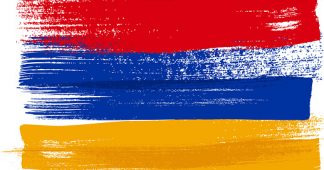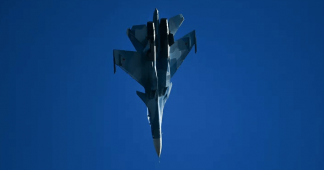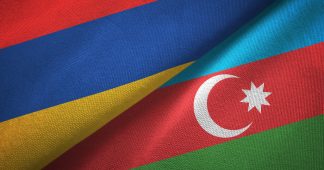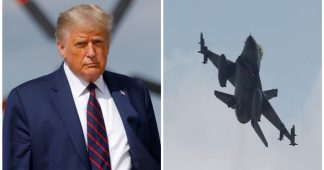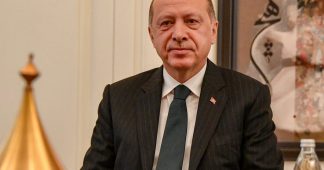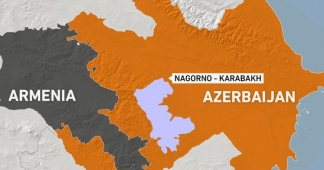Lindsey Sandoval
September 19, 2023
In Yerevan, hundreds of demonstrators gathered in front of the Armenian government building are demanding the resignation of Prime Minister Nikol Pashinyan, who, in their opinion, is “doing nothing” against the background of Azerbaijan’s “anti-terrorist measures” in Karabakh. Clashes occurred between security forces and protesters, the Armenian service of Radio Liberty (Radio Azatutyun) reports.
Armenian police, like Radio Azatutyun, used special equipment against the demonstrators, in particular, stun grenades.
The police are detaining people in front of the government building, and ambulances are approaching the protesting citizens, writes Sputnik Armenia. One of the demonstrators lost consciousness after the police used special equipment.
A representative of the Mother Armenia opposition bloc, Andranik Tevanyan, who was on the square in front of the government building, called on the country’s political forces to begin impeachment proceedings against Prime Minister Pashinyan.
The Investigative Committee of Armenia stated that it had opened criminal proceedings against those protesters who called for mass unrest in the country’s capital. The department also reported the arrest of activist Serob Naltakyan on suspicion of public calls for violence and justification of violence in front of the government building (clause 3 of part 2 of article 330 of the RA Criminal Code).
Earlier, protesters threw bottles at the security forces cordoning off the building of the Armenian government, and then attempted to storm the Cabinet. At the same time, they chanted “Nikol is a traitor!”, referring to the Prime Minister of Armenia Nikol Pashinyan.
****
On the afternoon of September 19, Azerbaijan announced the start of “anti-terrorism measures” in the areas of Nagorno-Karabakh that are populated by ethnic Armenians. The Nagorno-Karabakh Defense Army (a military structure operating in the unrecognized “Nagorno-Karabakh Republic”) reported that on September 19 at around 11:10 am, Azerbaijani armed forces violated the ceasefire in the Askeran region by using a mortar.
Immediately after Baku’s statement, residents of the Armenian regions of Karabakh began reporting heavy artillery shelling.
Later, the authorities of the self-proclaimed Nagorno-Karabakh announced five dead and 80 wounded as a result of shelling by the Azerbaijani armed forces. The Prosecutor General’s Office of Azerbaijan, in turn, reported one dead civilian – a resident of the Azerbaijani city of Shusha.
The National Security Service of Azerbaijan states that the operation began after the Karabakh military allegedly committed sabotage on the 58th kilometer of the Akhmedbeyli-Fuzuli-Shushi highway the day before, planting an anti-tank mine in the area. As a result of its explosion on September 19 at about 03:45, two civilians were killed. In addition, Baku claims the death of four Azerbaijani police officers who tried to get to the “scene of terrorism.”
The Nagorno-Karabakh Defense Army said it regards Baku’s statements “as another piece of disinformation.” Armenian Prime Minister Nikol Pashinyan said that Azerbaijan’s goal is to involve Armenia in a military operation, and Azerbaijan has launched an operation aimed at subjecting the population of Nagorno-Karabakh to ethnic cleansing. However, according to him, the Republic of Armenia is not involved in hostilities and Armenia “does not have an army in Nagorno-Karabakh.” Representatives of the Armenian Ministry of Defense made the same statement.
The territorial dispute between Armenia and Azerbaijan over Nagorno-Karabakh has been going on since the late 1980s. The Nagorno-Karabakh Autonomous Region, populated mainly by ethnic Armenians, with the support of Armenia, declared secession from the Azerbaijan SSR, and in September 1991 announced the creation of the “Nagorno-Karabakh Republic”.
During the armed conflict of 1988–1994, 30 thousand people died in the separatist region. Nagorno-Karabakh and several adjacent regions of Azerbaijan came under the de facto control of the Armenian armed forces. As a result, hundreds of thousands of people, mostly ethnic Azerbaijanis, became refugees and internally displaced persons.
The “Nagorno-Karabakh Republic” is not officially recognized by any UN country, including Armenia. In 1993, the UN adopted four resolutions demanding the withdrawal of Armenian troops from the Karabakh region and recognition of the territory as part of Azerbaijan.
After another escalation of the situation at the end of September 2020, Azerbaijan returned to its control the areas around Nagorno-Karabakh and took the ancient and symbolically significant city of Shusha (Shushi in Armenian). The day after the capture of Shushi, Armenian Prime Minister Nikol Pashinyan, Azerbaijani President Ilham Aliyev and Russian President Vladimir Putin signed a ceasefire statement in Nagorno-Karabakh.
Under the terms of the agreement, Armenia and Azerbaijan are assigned the territories where troops were located at the time the document was signed. A Russian peacekeeping mission is stationed along the contact line.
After this, Azerbaijan began a blockade of areas of Karabakh populated by ethnic Armenians: checkpoints were set up on the only road that did not allow any cargo, including food and humanitarian aid, to enter the region. Residents of Armenian areas of Karabakh have reported hunger in recent weeks.
We remind our readers that publication of articles on our site does not mean that we agree with what is written. Our policy is to publish anything which we consider of interest, so as to assist our readers in forming their opinions. Sometimes we even publish articles with which we totally disagree, since we believe it is important for our readers to be informed on as wide a spectrum of views as possible.
